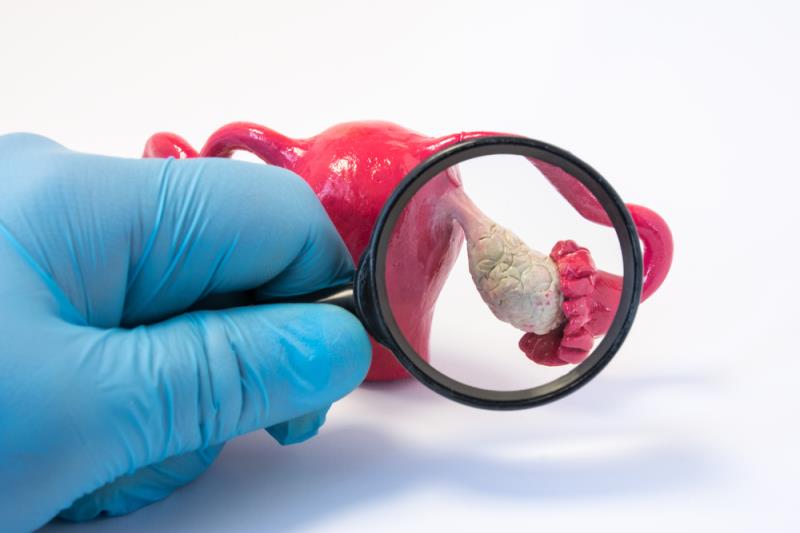
The widely adopted practice of secondary surgical cytoreduction in women with platinum-sensitive recurrent ovarian cancer is being called into question as a phase III trial shows no improvement in overall survival (OS) with this approach.
In the Gynecologic Oncology Group (GOG)-0123 trial, 485 patients with recurrent ovarian cancer who had received one previous therapy and had a platinum-free interval of at least 6 months were randomized to undergo secondary surgical cytoreduction followed by platinum-based chemotherapy (n=240), or to receive platinum-based chemotherapy alone (n=245). Adjuvant chemotherapy was with either paclitaxel plus carboplatin or gemcitabine plus carboplatin, with or without bevacizumab, based on physician’s choice. [N Engl J Med 2019;381:1929-1939]
After a median follow-up of 48.1 months, OS was reduced in the surgery vs no surgery group (median, 50.6 months vs 64.7 months), with a hazard ratio (HR) for death of 1.29 (95 percent confidence interval [CI], 0.97 to 1.72; p=0.08). The 3-year OS rate was 67 percent vs 74 percent.
“Adjustment for platinum-free interval and chemotherapy choice did not alter the effect [on OS],” the investigators noted.
In the surgery group, OS was longer among patients who achieved complete gross resection (67 percent) compared with patients with incomplete resection (median, 56 months vs 37.8 months; HR for death, 0.61; 95 percent CI, 0.40 to 0.93). However, complete gross resection was not associated with an OS benefit compared with treatment with chemotherapy alone (HR for death, 1.03; 95 percent CI, 0.74 to 1.46).
Progression-free survival (PFS) was likewise not significantly improved with surgery vs no surgery (median, 18.9 months vs 16.2 months; HR, 0.82; 95 percent CI, 0.66 to 1.01), with a 3-year PFS rate of 29 percent vs 20 percent. However, patients with complete gross resection had improved PFS compared with those with incomplete resection (median, 22.4 months vs 13.1 months; HR, 0.51; 95 percent CI, 0.36 to 0.71) as well as those who did not undergo surgery (HR, 0.62; 95 percent CI, 0.48 to 0.80).
In the trial, 84 percent of patients received platinum-based chemotherapy with bevacizumab followed by bevacizumab maintenance, with no significant difference between the surgery and no surgery groups. The 30-day rate of surgical morbidity was 9 percent, with one death (0.4 percent) due to postoperative complications. Although there were significant decreases in patient-reported quality of life and physical functioning immediately after surgery, no significant between-group differences were observed on average and over assessment time points.
“Secondary surgical cytoreduction is widely performed in women with platinum-sensitive recurrent ovarian cancer, but has not been evaluated in phase III trials,” the investigators commented. “Our findings call into question the merit of surgical cytoreduction in this population, and underscores the importance of formally assessing the value of the procedure in clinical care.”
At least three ongoing phase III trials (DESKTOP-III, SOCceR and SOC 1) are comparing surgery and chemotherapy with surgery alone. Among these trials, DESKTOP-III has a similar design to GOG-0213 with OS as primary endpoint.